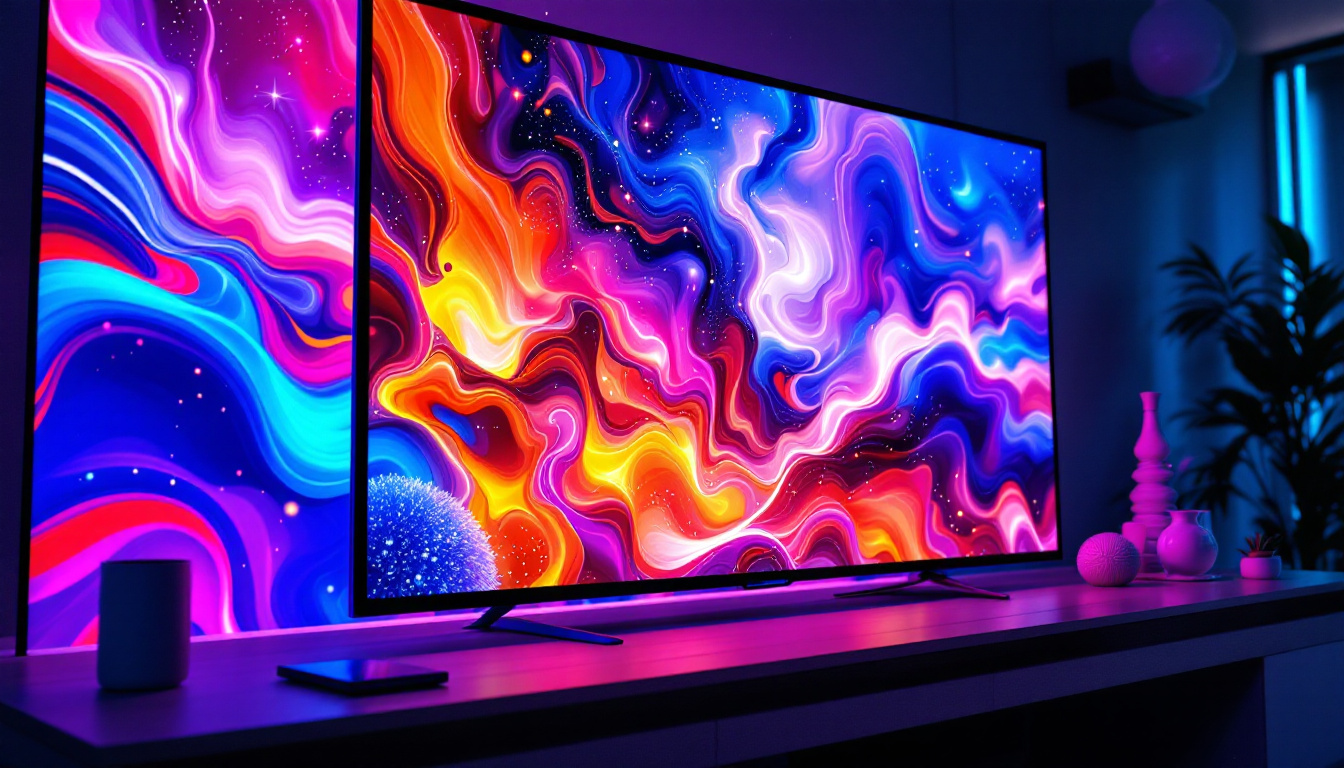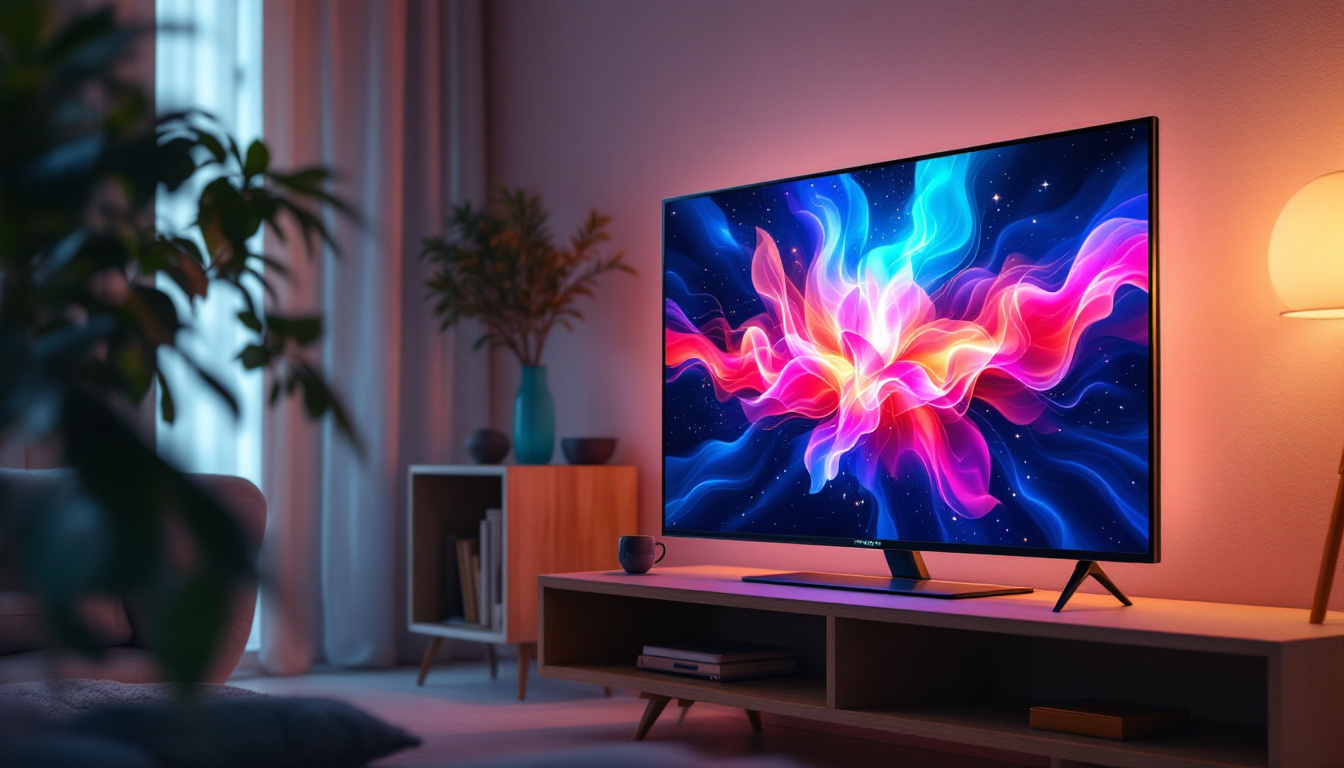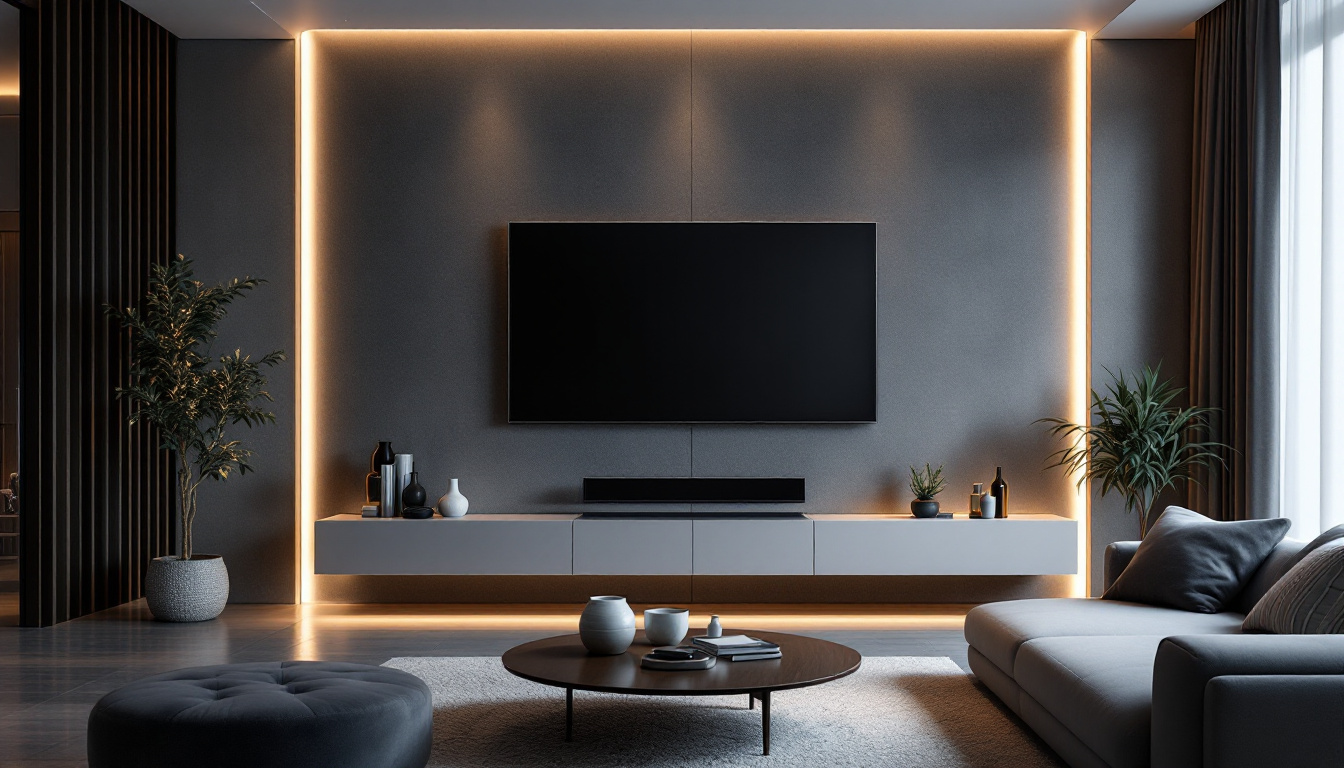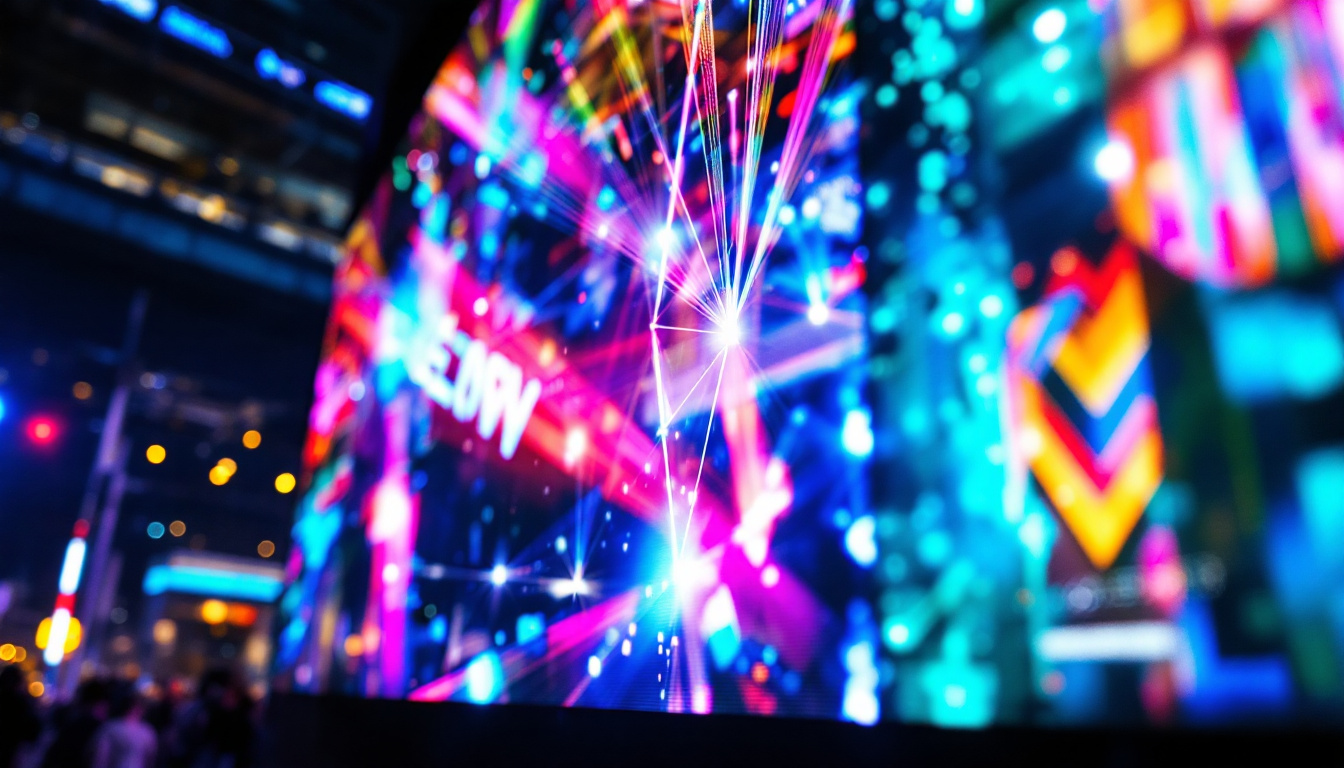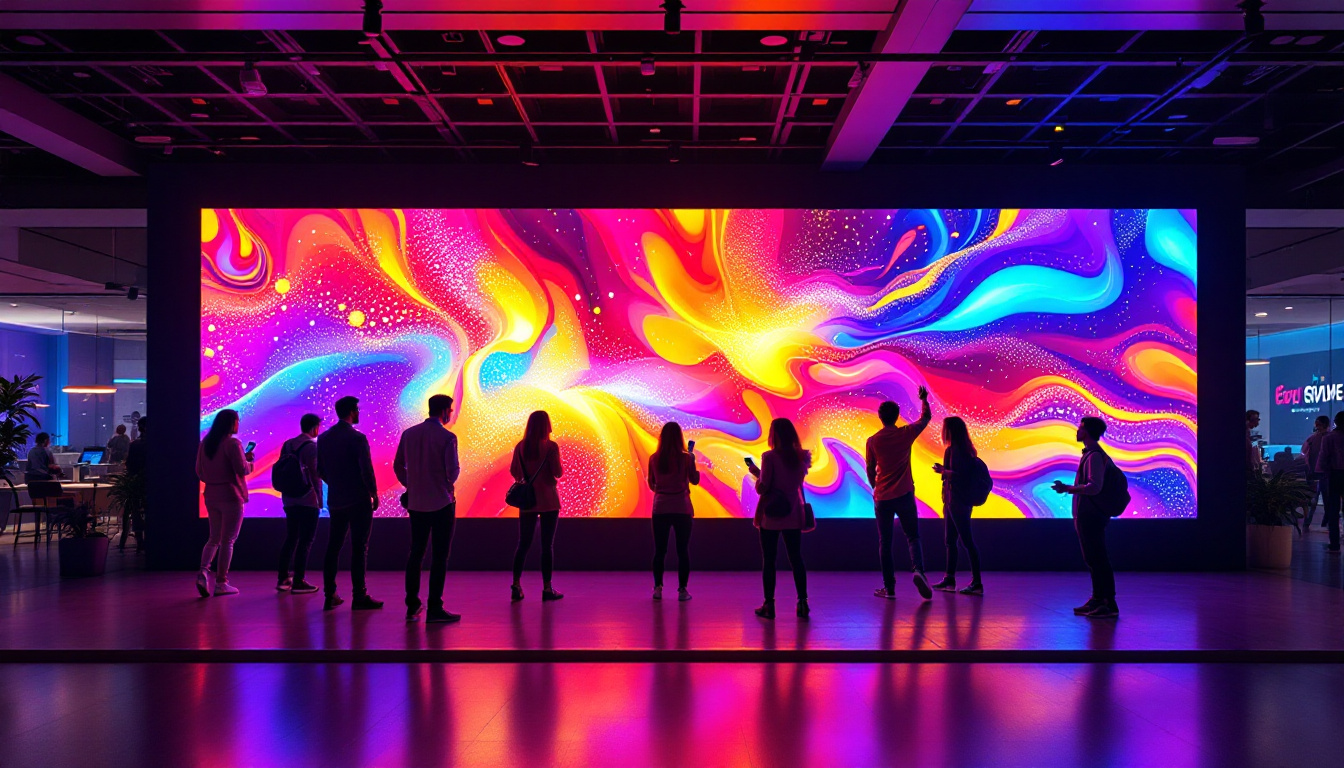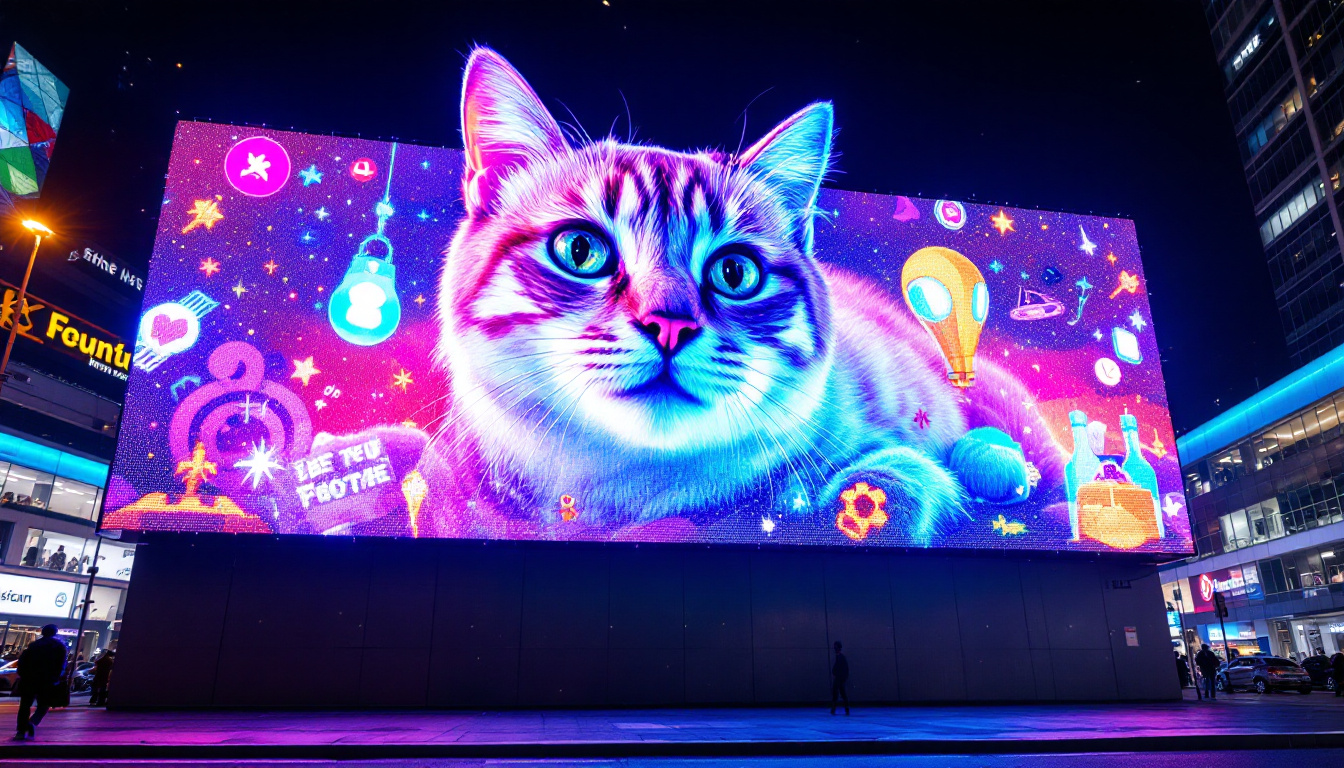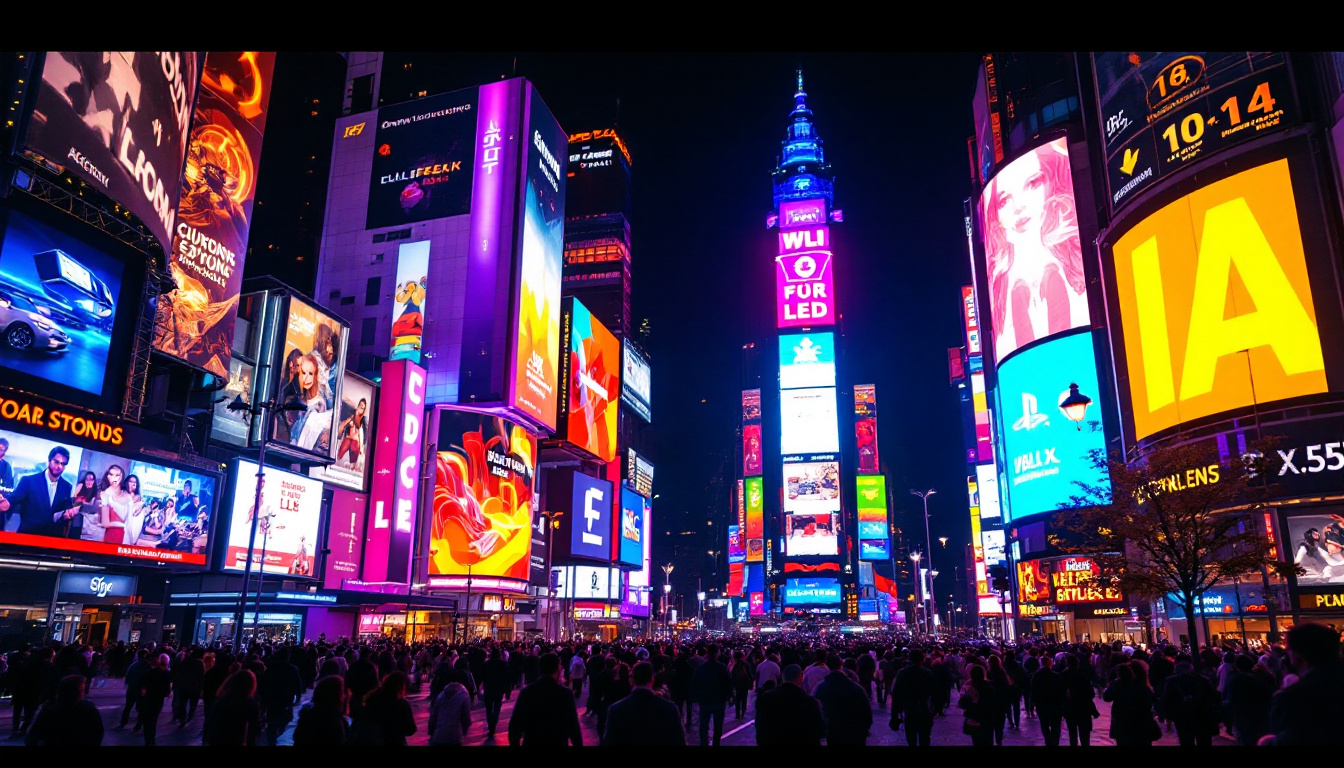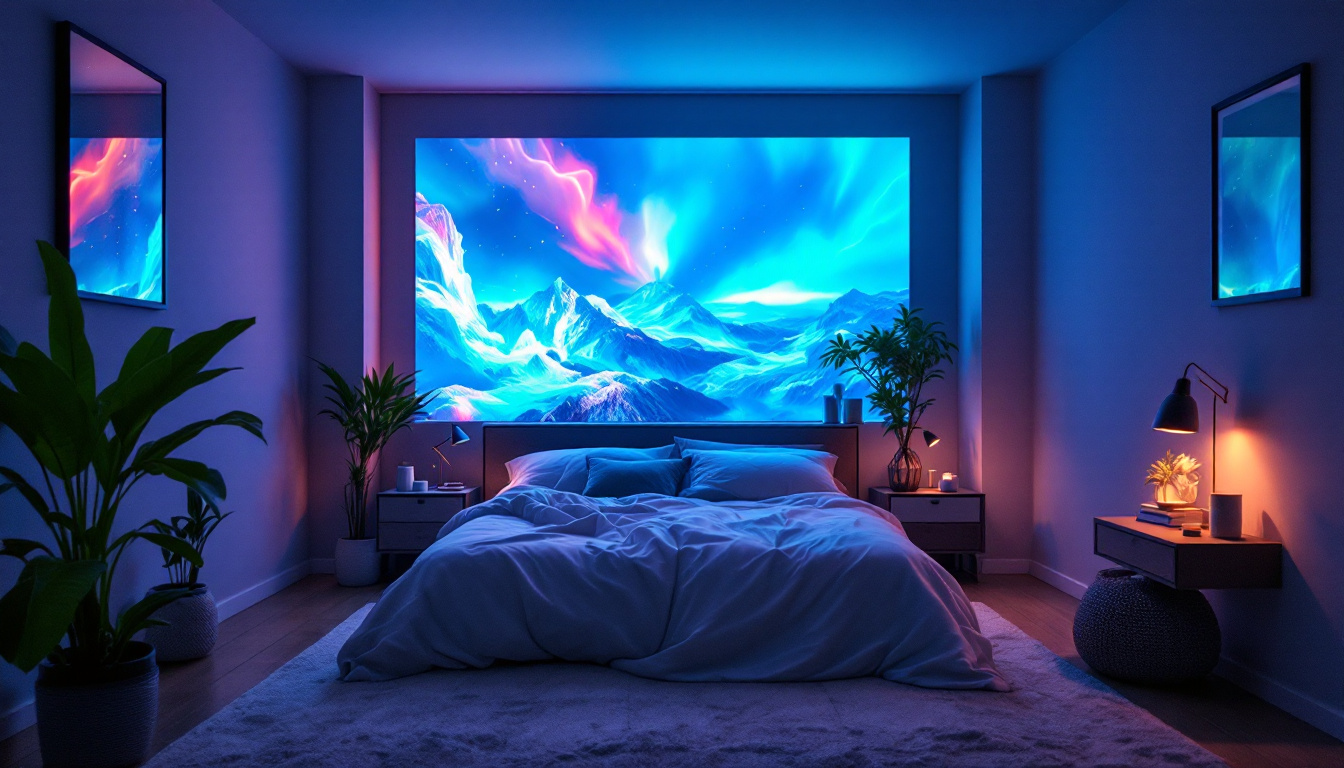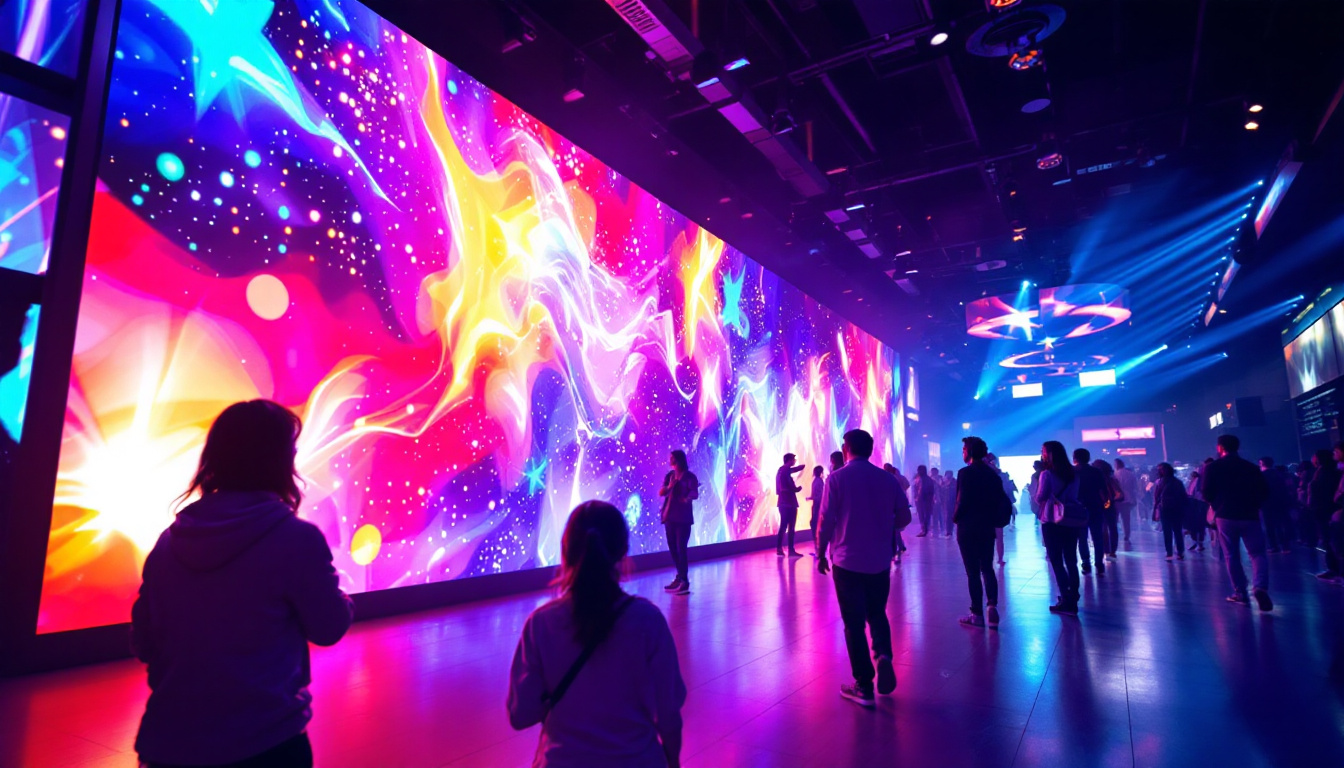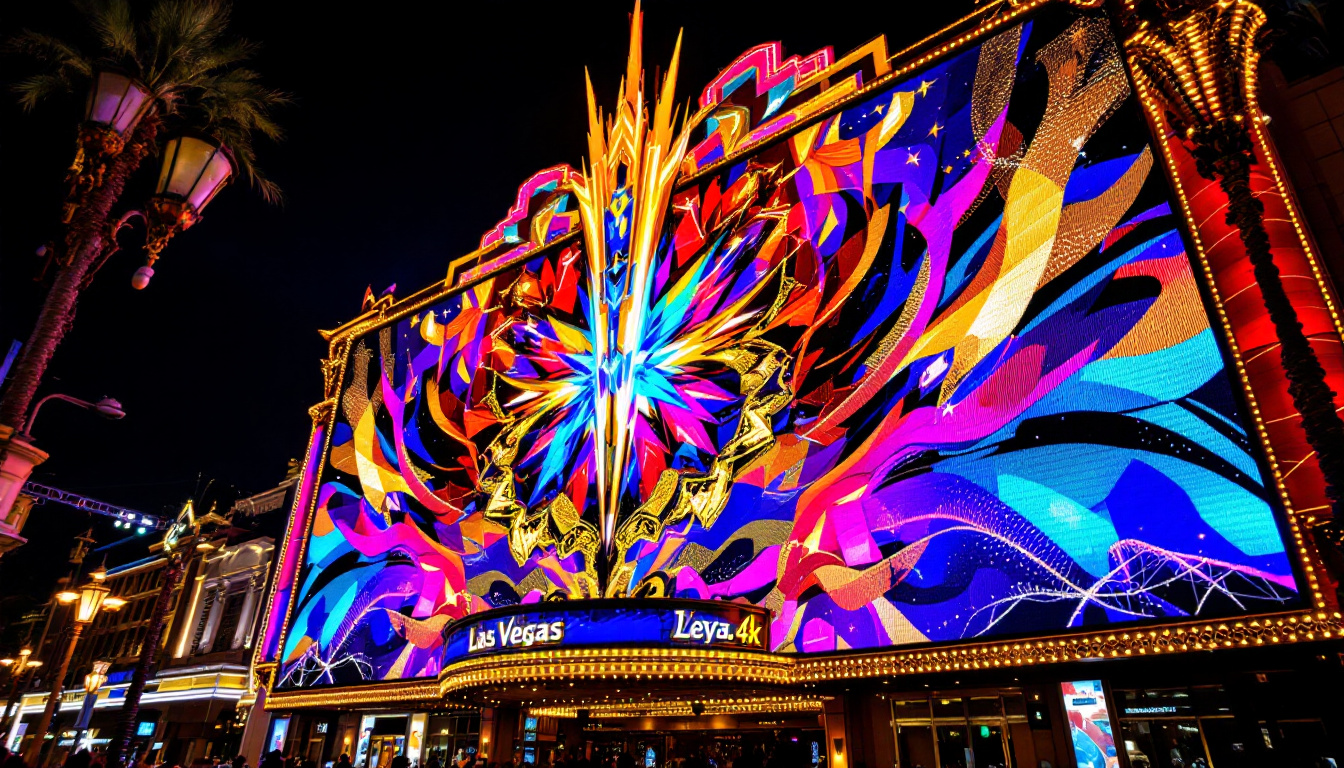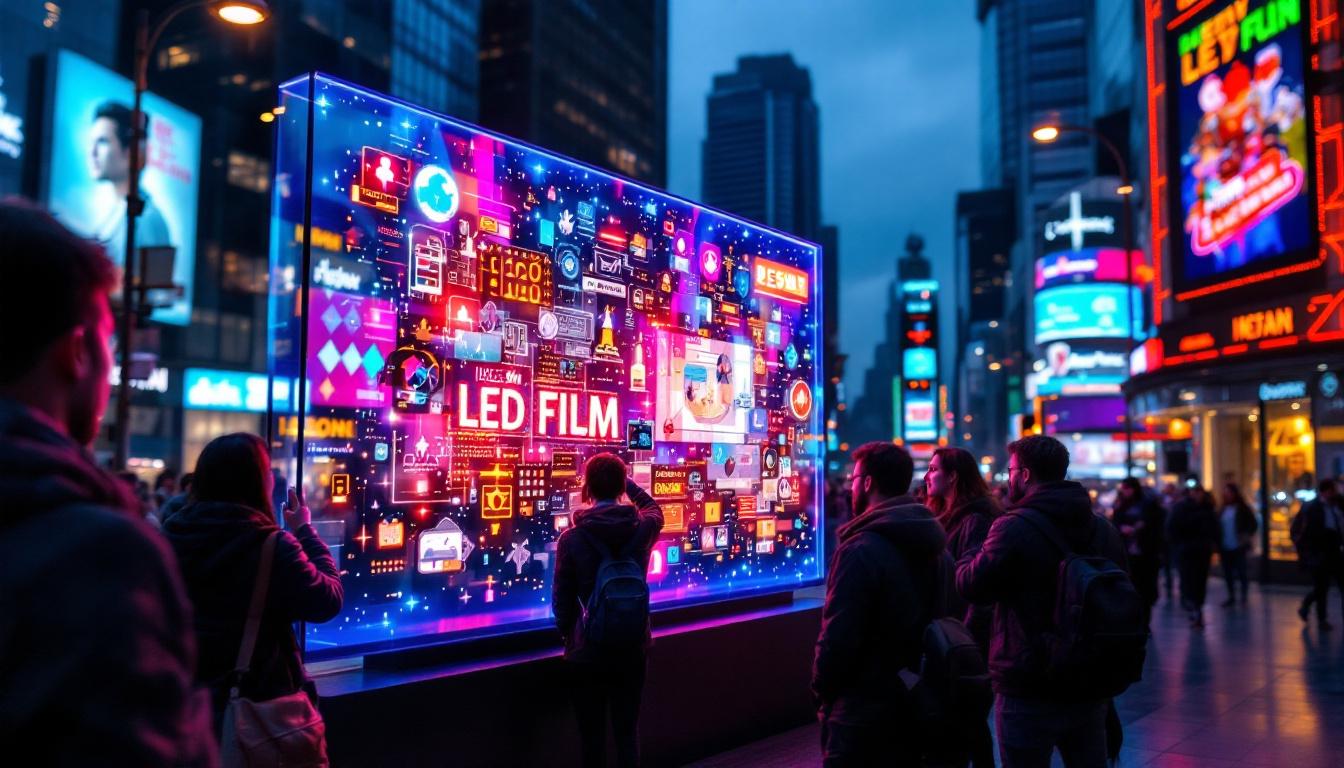In today’s digital age, flat panel displays have become ubiquitous, found in everything from televisions to smartphones. Among the various technologies that power these displays, LED (Light Emitting Diode) technology stands out for its efficiency, brightness, and versatility. This article delves into the intricacies of LED displays, exploring their functionality, advantages, and the different types available in the market.
Understanding Flat Panel Displays
Flat panel displays represent a significant advancement over traditional cathode ray tube (CRT) displays. Their slim profile and lightweight design make them ideal for modern applications, ranging from consumer electronics to professional environments. But what exactly defines a flat panel display?
Definition and Characteristics
A flat panel display is a thin, lightweight screen that uses various technologies to produce images. Unlike CRTs, which rely on electron beams and phosphorescent screens, flat panels utilize technologies such as LCD (Liquid Crystal Display), OLED (Organic Light Emitting Diode), and LED. The defining characteristics of flat panel displays include:
- Thin and lightweight design
- High resolution and image quality
- Energy efficiency
- Wide viewing angles
These features have made flat panel displays the preferred choice for many applications, including televisions, computer monitors, and digital signage. Furthermore, the advancements in display technology have allowed for the integration of smart features, enabling connectivity with the internet and other devices, thus enhancing user experience. As a result, flat panel displays have not only transformed the way we consume media but have also influenced the design and functionality of various products in the tech ecosystem.
How LED Displays Work
LED displays are a type of flat panel display that utilizes light-emitting diodes to produce images. The basic principle behind LED technology involves the emission of light when an electric current passes through a semiconductor material. This process is fundamental to understanding how LED displays function.
In an LED display, the diodes are arranged in a grid, with each diode corresponding to a pixel on the screen. When the diodes are activated, they emit light in various colors, creating the images that users see. The combination of red, green, and blue (RGB) light from these diodes allows for a broad spectrum of colors, resulting in vibrant and dynamic visuals. Additionally, LED displays can be further categorized into two main types: edge-lit and backlit. Edge-lit displays use LEDs placed along the edges of the screen to illuminate the display, while backlit displays have a full array of LEDs behind the screen, providing more uniform brightness and improved contrast. This distinction is crucial for consumers looking for specific performance characteristics, especially in environments with varying lighting conditions.
Types of LED Displays
LED displays can be categorized into several types based on their technology and application. Understanding these distinctions is crucial for consumers and businesses alike, as each type offers unique benefits and drawbacks.
Direct LED vs. Edge-Lit LED
One of the primary distinctions in LED displays is between direct LED and edge-lit LED configurations. Direct LED displays have an array of LEDs placed directly behind the screen, providing uniform lighting across the entire display. This setup enhances brightness and color accuracy, making it ideal for high-end televisions and professional monitors.
On the other hand, edge-lit LED displays position the LEDs along the edges of the screen. The light then spreads across the display using a light guide panel. While this design allows for thinner screens, it may result in uneven brightness and limited color depth compared to direct LED displays. Additionally, edge-lit displays are often more cost-effective, making them a popular choice for budget-conscious consumers. However, they may not perform as well in brightly lit environments, where reflections and glare can diminish the viewing experience.
OLED vs. QLED
Another important distinction in the realm of LED displays is between OLED (Organic Light Emitting Diode) and QLED (Quantum Dot LED) technologies. OLED displays utilize organic compounds that emit light when an electric current is applied, allowing for true blacks and exceptional contrast ratios. Each pixel in an OLED display can be turned off completely, resulting in deeper blacks and a more immersive viewing experience.
In contrast, QLED displays leverage quantum dot technology to enhance brightness and color accuracy. While QLED displays can achieve higher brightness levels than OLEDs, they do not match the contrast capabilities of OLED technology. Each type has its own set of advantages, making them suitable for different viewing environments and preferences. For instance, QLED displays excel in bright rooms due to their superior brightness, making them a great choice for daytime viewing. Meanwhile, OLED displays are favored by cinephiles and gamers who appreciate the deep contrasts and vibrant colors that enhance darker scenes. This divergence in performance underscores the importance of selecting the right display type based on individual viewing habits and environmental conditions.
Advantages of LED Displays
LED displays offer numerous advantages that contribute to their popularity across various applications. These benefits extend beyond mere aesthetics, impacting performance, energy consumption, and user experience.
Energy Efficiency
One of the most significant advantages of LED displays is their energy efficiency. Compared to traditional display technologies, LED displays consume considerably less power. This efficiency not only reduces electricity bills but also contributes to a smaller carbon footprint, making LED technology a more environmentally friendly choice.
Moreover, the longevity of LED displays further enhances their energy efficiency. LED technology typically has a longer lifespan than other display types, meaning fewer replacements and less waste over time.
Brightness and Color Accuracy
LED displays are renowned for their brightness levels, making them suitable for various lighting conditions. Whether in a dimly lit room or a brightly lit environment, LED displays can deliver clear and vibrant images. This capability is particularly beneficial for outdoor signage and displays, where visibility is crucial.
In addition to brightness, LED displays excel in color accuracy. The ability to produce a wide color gamut ensures that images appear true to life, enhancing the overall viewing experience. This quality is especially important for professionals in fields such as graphic design and photography, where color fidelity is paramount.
Applications of LED Displays
The versatility of LED displays allows them to be used in a wide range of applications, from consumer electronics to large-scale commercial installations. understanding these applications can help consumers and businesses make informed decisions when selecting display technology.
Consumer Electronics
In the realm of consumer electronics, LED displays are prevalent in televisions, computer monitors, and mobile devices. The demand for high-definition content has driven the development of LED technology, resulting in displays that offer stunning visuals and immersive experiences.
Smart TVs, equipped with LED displays, provide access to streaming services, gaming, and other multimedia content, making them a central hub for entertainment in many households. The integration of smart technology with LED displays continues to evolve, offering consumers even more features and capabilities.
Commercial and Industrial Use
Beyond consumer electronics, LED displays play a vital role in commercial and industrial applications. Digital signage, often seen in retail environments, utilizes LED technology to attract customers and convey information effectively. The brightness and clarity of LED displays ensure that advertisements are eye-catching and impactful.
In industrial settings, LED displays are used for monitoring systems, control panels, and information boards. Their durability and reliability make them suitable for environments where traditional displays may fail. The ability to customize LED displays for specific applications further enhances their utility in various industries.
Future Trends in LED Display Technology
The landscape of LED display technology is continuously evolving, driven by advancements in research and development. As consumer demands change and new applications emerge, several trends are shaping the future of LED displays.
Mini and Micro LED Technology
One of the most exciting developments in LED technology is the emergence of mini and micro LED displays. These technologies utilize significantly smaller LEDs, allowing for higher pixel densities and improved image quality. Mini and micro LED displays can achieve remarkable levels of detail and color accuracy, making them ideal for applications such as virtual reality and augmented reality.
Furthermore, the compact nature of mini and micro LEDs enables the creation of flexible and curved displays, opening up new possibilities for design and functionality. As this technology matures, it is expected to revolutionize the way consumers interact with visual content.
Integration with Artificial Intelligence
The integration of artificial intelligence (AI) with LED display technology is another trend to watch. AI can enhance the user experience by optimizing display settings based on environmental conditions, content type, and user preferences. This capability can lead to improved energy efficiency and a more personalized viewing experience.
Additionally, AI can be used in content management systems for digital signage, allowing for real-time updates and targeted advertising. The combination of LED displays and AI technology promises to create more dynamic and engaging visual experiences.
Conclusion
LED displays have transformed the landscape of visual technology, offering a blend of efficiency, brightness, and versatility. As the demand for high-quality displays continues to grow, understanding the intricacies of LED technology becomes increasingly important. From consumer electronics to commercial applications, LED displays are poised to remain at the forefront of innovation.
With advancements such as mini and micro LED technology and the integration of AI, the future of LED displays looks promising. As consumers and businesses navigate the world of flat panel displays, the knowledge of LED technology will empower them to make informed decisions that enhance their visual experiences.
In summary, LED displays are not just a technological advancement; they represent a shift in how we interact with visual content in our daily lives. Whether for entertainment, communication, or professional use, LED displays are set to play a pivotal role in shaping the future of visual technology.
Discover LumenMatrix’s Innovative LED Display Solutions
As you consider the future of visual technology and the role LED displays will play in it, LumenMatrix invites you to explore our comprehensive range of LED display solutions. Our commitment to innovation ensures that whether you need an Indoor LED Wall Display, a vibrant Outdoor LED Wall Display, or any of our specialized options like Vehicle LED Displays and LED Sports Displays, you’ll find a product designed to elevate your brand’s visibility and audience engagement. Experience the transformative power of our LED display modules and join the revolution in visual communication. Check out LumenMatrix LED Display Solutions today and see how we can help you create captivating visual experiences that resonate with your audience.

